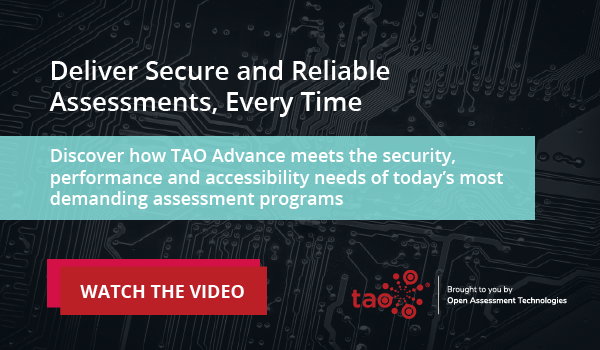In today’s digital world, online education is here to stay, especially when it comes to testing and assessments. However, as we transition to online testing, it’s essential to distinguish between two pivotal terms: exam security and integrity. Although these terms might sometimes be used interchangeably in the context of digital assessments, they have unique implications.
Understanding Integrity in Assessments
Integrity in digital assessments pertains to the authenticity, trustworthiness, and consistency of the evaluation process and its outcomes. It covers:
- Authenticity of Work: Ensuring work submitted by test-takers is genuinely their own, free from plagiarism or unauthorized assistance. This validity confirms that the assessment reflects a learner’s knowledge and capabilities.
- Fairness: Every participant should have an equal chance to succeed. Assessments must be unbiased and provide equal resources and conditions for all, barring specific accommodations.
- Consistency and Reliability: If replicated, the assessment should yield consistent results, indicating its reliability.
- Validity: Assessments must measure what they claim to, ensuring they truly evaluate the intended skills or knowledge.
- Confidentiality: Safeguarding test-takers’ personal and performance data is critical and it should be shared only with authorized entities.
Defining Security in Assessments
Assessment security deals with safeguarding technology and data. A secure exam platform protects student personal data and exam content and ensures that the technology used is robust against external threats, such as hacking. It includes:
- Data Protection: Keeping personal and performance details of test-takers shielded from unauthorized breaches and theft.
- Platform Security: Regular software updates, secure coding practices, and employing firewalls ensure a bulwark against threats like hacking, malware, and phishing.
- Content Security: Ensuring that assessment questions, answers, and other materials remain confidential, preventing potential leaks that undermine the test’s integrity.
- Access Controls: Mechanisms to determine the access hierarchy within an assessment system, often based on roles.
- Authentication and Authorization: Using secure login mechanisms and multi-factor authentication to keep out unauthorized users.
- Network Security: Encrypting data transmission, using secure hosting environments, and protection against DDoS attacks to maintain the sanctity of online assessments.
- Audit Trails: Detailed activity logs within the assessment platform that can be instrumental for tracking and investigations.
- Regular Security Audits: Periodical assessments to identify potential vulnerabilities and implement corrective actions.
Essential Tools for Upholding Exam Security & Integrity
While there’s no one-size-fits-all solution, certain features distinctly enhance the integrity and security of online examinations. While this discussion isn’t exhaustive, it emphasizes some crucial functionalities that digital platforms should consider to improve exam security.
Question randomization is a way to ensure that every test-taker is presented with either a unique set of questions or at least a distinct sequence. Such randomization reduces the likelihood of students copying from one another and maintains the test’s unpredictability.
Another essential consideration is to know the item exposure. Preventing the overexposure of questions to a vast audience is crucial for maintaining test unpredictability and integrity. It can be achieved by limiting how often specific questions appear or by having an extensive repository of potential questions to draw from.
When monitoring test metrics, if you’ve set certain expectations based on calibrated items but notice unexpected behaviors on your dashboard, it could indicate a content leak. In such scenarios, exam platforms equipped with the right analytical tools are invaluable in overseeing the test’s integrity.
Furthermore, security plugins play a pivotal role in strengthening online exam integrity. Despite “security” in the name, their primary aim is to preserve the authenticity of the exam. Features like lockdown browsers restrict students from using unauthorized online resources. Similarly, disabling functionalities like copy-paste, print-screen, and the ability to exit full-screen mode ensures the student relies purely on their understanding.
With the global reach of digital assessments, remote proctoring has come to the forefront as a tool for maintaining exam integrity. Monitoring the test-taker through video — often AI-assisted — ensures candidates don’t resort to unfair means. These systems are adept at detecting anomalies, from suspicious eye movements to the presence of unauthorized materials or individuals.
A reliable, secure exam delivery platform will prioritize data access control, which acts as a shield for sensitive data, dictating who gets access to specific information. Only the right people can manage, view, or score tests with role-based controls, preserving the exam’s credibility.
—
As digital testing becomes a standard practice, it offers excellent benefits like efficiency and reach. But it also brings challenges in security and fairness. For educators and tech teams, understanding these issues is crucial. As the digital testing field evolves, we’ll face new hurdles. However, we can ensure our assessments are secure and high-quality with clear strategies and continuous improvement.


